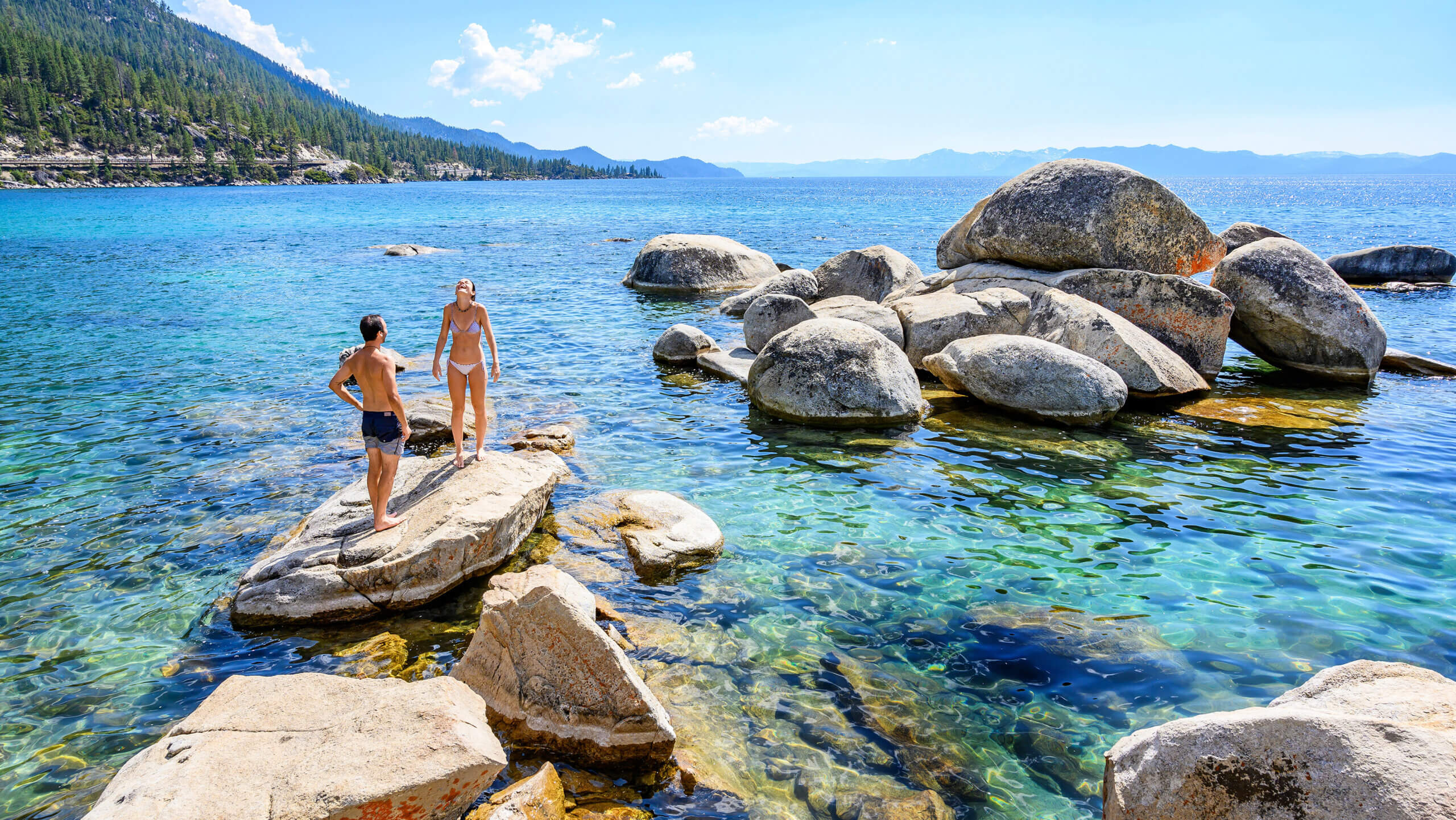SOUTH LAKE TAHOE, Calif. — Authorities said that better weather has slowed the growth of the vast California wildfire near Lake Tahoe resort communities. The Caldor Fire remained only a few miles from South Lake Tahoe, which was emptied of 22,000 residents days ago, along with casinos and shops across the state line in Nevada. Still, no significant fire activity has occurred since Thursday, officials said. An operations section chief, Tim Ernst, said fire officials were cautiously optimistic thanks to “a lot of hard work” by firefighters over the past two weeks.
The nearly 333-square-mile (862-square-kilometer) fire was not making any significant advances and was not challenging containment lines in long sections of its perimeter, but Ernst said “the risk is still out there” with some areas that remained hot. Residents on the western and northern sides of the fires were allowed back home by Friday afternoon. Still, fire officials said they don’t have a specific timeline for repopulating South Lake Tahoe. Utility companies have to ensure power is restored, fire crews must remove hazardous trees and other threats to power lines, and roadways must be cleared of debris.
Jake Cagle, another operations section chief, said fire and law enforcement officials are evaluating the issue in meetings several times daily to determine when to lift evacuation orders. “It’s all based on fire behavior. For now, things are looking good. On that contingent, we’re getting close,” he said. The fire had been driven northeast on a course leading to South Lake Tahoe for days by southwestern winds, but that pattern ended this week. Calmer winds and increased humidity Thursday and Friday helped crews increase containment of the blaze to 29%.

“Very positive trends regarding weather,” said Dean Gould, a U.S. Forest Service administrator. “That’s huge for us. Let’s take full advantage of it while we have this window.” With the fire growing at the lowest rate in two weeks, he said, “Things are heading in the right direction for us.” Amid the positive outlook, incident meteorologist Jim Dudley warned that the air mass in the Sierra Nevada drains downslope every night and then sloshes upslope during the day and that the region’s terrain of ridges and deep canyons can create winds that go in “squirrely directions.” “Just because we don’t have red flag wind conditions across the fire, the wind threat is still there, and it’s all localized,” he warned.
Residents were forced to flee South Lake Tahoe earlier this week, and people across the state line in Douglas County, Nevada remained evacuated. The fire — which began Aug. 14, was named after the road where it started and raged through densely forested, craggy areas — was still considered a threat to more than 30,000 homes, businesses, and other buildings ranging from cabins to ski resorts. The resort area can easily accommodate 100,000 people on a busy weekend but be eerily empty just before Labor Day.
The wildfire dealt a significant blow to an economy that heavily depends on tourism and was starting to rebound this summer from pandemic shutdowns. “It’s a big hit for our local businesses and the workers who rely on a steady income to pay rent and put food on their table,” said Devin Middlebrook, mayor pro-tem of South Lake Tahoe. He said the shutdown would also hurt the city, as it gets most of its revenue to pay for police and fire services and road maintenance from hotel taxes and sales taxes.
Fire officials said that Friday’s forecast called for lighter winds and parched daytime weather, with a warming trend through the weekend as high pressure builds over the West. Over 15,000 firefighters were battling dozens of California blazes that destroyed at least 1,500 homes. The Dixie Fire was about 65 miles (105 kilometers) north of the Caldor Fire. It is the second-largest wildfire in state history at about 1,350 square miles (3,496 square kilometers) and is 55% contained.
California has experienced increasingly larger and deadlier wildfires in recent years as climate change has made the West much warmer and drier over the past 30 years. Scientists have said the weather will continue to be more extreme and wildfires more frequent, destructive, and unpredictable. No deaths have been reported so far this fire season. Associated Press writer John Antczak in Los Angeles contributed to this report. Nguyensaidd from San Francisco.


















Leave a Reply